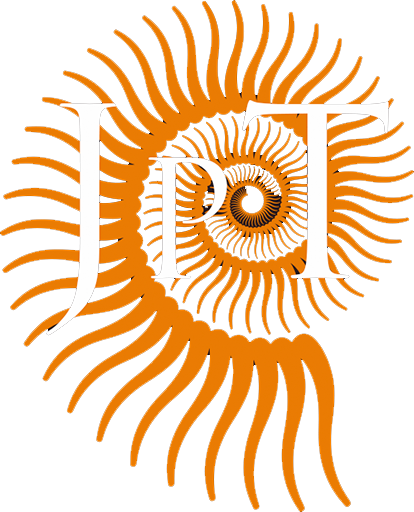JPT No. 11 – Low cost 3D scanning using off-the-shelf video gaming peripherals
Peter L. Falkingham1
1- Department of Comparative Biomedical Sciences, Structure & Motion Laboratory, Royal Veterinary College, London, UK and Department of Ecology Evolutionary Biology, Division of Biology and Medicine, Brown University, USA Email: pfalkingham@rvc.ac.uk
ABSTRACT
Digitization of specimens is becoming an ever more important part of palaeontology, both for archival and research purposes. The advent of mainstream hardware containing depth sensors and RGB cameras, used primarily for interacting with video games, in conjunction with an open platform used by developers, has led to an abundance of highly affordable technology with which to digitize specimens. Here, the Microsoft® Kinect™ is used to digitize specimens of varying sizes in order to demonstrate the potential applications of the technology to palaeontologists. The resulting digital models are compared with models produced using photogrammetry. Although the Kinect™ generally records morphology at a lower resolution, and thus captures less detail than photogrammetric techniques, it offers advantages in speed of data acquisition, and generation of a completed mesh in real time at the point of data collection. Whilst it is therefore limited in archival applications, the ease of use and low cost, driven by strong market competition, make this technology an enticing alternative for studies where rapid digitization of general morphology is desired.
Keywords: Scanning; 3D; digital; model; laser; Kinect; digitization, photogrammetry
INTRODUCTION
The ability to digitally capture the 3D morphology of a specimen has revolutionised palaeontology over recent years. Working in the virtual realm permits investigators to section, profile, maniulate and colour a specimen in ways that would otherwise be difficult or impossible, and often destructive, if applied to the real fossils. The use of digital models has facilitated a wide range of research into areas including locomotion, feeding, body mass calculations, documentation, conservation, hydro- and aerodynamics, and many others (Anderson et al., 2011; Bates et al., 2012; Bates and Falkingham, 2012; Bates et al., 2009; Falkingham et al., 2009; Farlow et al., 2012; Gidmark et al., 2013; Hutchinson et al., 2011; Panagiotopoulou et al., 2011; Rayfield, 2007; Sellers et al., 2012). Equally importantly, digitization of specimens in the internet age has enabled an unprecedented level of data sharing and collaboration, exemplified by online repositories such as Digimorph (www.digimorph.org), and online journals such as this, which enable digital models to accompany publications as electronic supplementary material (see appendices).
Until recently, however, digitization of fossils remained the purview of those with access to expensive hardware such as computed tomography (CT) and laser scanners, or expensive software-based photogrammetric solutions. While CT machines remain a requirement for internal morphology, methods with which to digitize external morphology have reached such a low cost that they have become available to anyone. Photogrammetric techniques can now be employed with a basic consumer camera, desktop PC, and free software (Falkingham, 2012).
One of the major developments in photogrammetric software most recently has been incorporating the GPU, or Graphics Processing Unit, found in many modern desktop and laptop computers – particularly in machines built for running computer games. The GPU contains many cores, far exceeding the number of cores found on the CPU, or Central Processing Unit (the ‘processor’ of the computer). While GPU cores are more specialized than those on the CPU, they can be used to dramatically speed up 3D applications (providing the software is written to take advantage of the GPU). Importantly, unlike more industrial hardware such as laser scanners, GPUs form part of a major consumer driven market – the video game industry – which drives prices down and processing power up at exceptional rates. Coupled with the falling cost of rapid-prototype machines (3D printers), there is now also a growing consumer demand for 3D digitization, which means that palaeontologists can take advantage of software and hardware developments at prices determined by aggressive market forces.
One such recent development is in using depth sensors, designed for interacting with computer games without a traditional controller, to scan and digitize objects and environments. Such sensors first came into being (at least in the mainstream) with the Microsoft KinectTM for Xbox 360®, released for the gaming console in 2010. This was later followed by the Microsoft KinectTM for Windows®, and the Asus® Xtion Pro, which possess similar specifications but are designed for developers and a personal computer environment.
Although developed for computer games, the low cost depth sensor was quickly ‘hacked’ for other uses, particularly in the fields of robotics (Stowers et al., 2011) and rehabilitation (Chang et al., 2011). Of pertinence here is that one of these uses included real time mapping of the environment, and tracking of the sensor (Newcombe et al., 2011). Despite initially being developed for robots navigating environments, the 3D mapping functionality can be used to create digital 3D models of objects or environments, and software applications designed for this purpose are now available (Izadi et al., 2011). These applications are possible because of the recent increases in consumer GPUs; being able to record a point cloud from the depth sensor, and in real time mesh that point cloud to produce a 3D model.
In this paper, I aim to demonstrate the applicability of these gaming peripherals and associated software packages for scanning and digitising palaeontological specimens.
